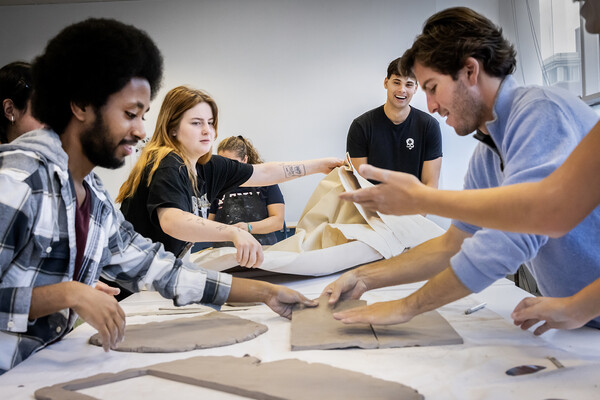Fels study shows Free Library’s economic impact
It’s not easy to put a price on the acquisition of knowledge, professional development and community pride.
But that is precisely what officials at the Free Library of Philadelphia asked Penn’s Fels Institute of Government to do by creating an economic impact report quantifying the value of the city’s vast library system in dollars and cents.
“We wanted to be able to make a statement about the important role we play in the economic development of the city,” says Siobhan Reardon, president and director of the Free Library. “People know a library is nice to have. But we wanted to show how important the resources are that we have, to show that the library is a place where people can go and get help moving forward, to find help getting back to work, to think about their lives, and all for free.”
The study—prepared by Fels Senior Consultant Deborah Diamond, Penn Institute for Urban Research (IUR) Fellow Kevin C. Gillen and Fels graduate student Marissa Litman—is one of the first to quantify the economic impact of a library system the size of Philadelphia’s, with 54 branches and an operating budget of about $87 million.
The findings, Reardon says, were illuminating. According to the report, in addition to contributing to the literacy and cultural welfare of city residents, the library system last year generated more than $30 million of economic value in business development and it also increased property value.
According to the report, an estimated 8,600 businesses benefitted from the library system’s resources, providing entrepreneurs with information that helped them start or grow their enterprises. The Free Library also helped nearly 1,000 Philadelphians find jobs directly through institutional resources. Those jobs, the report notes, will translate into $30 million in earned income in one year and will generate $1.2 million in tax revenue for the city.
Diamond says because many cities like Philadelphia are facing severe budget constraints, it is important to illustrate the contributions institutions like the Free Library make to the community “with hard numbers.” Reardon adds that she felt it was important for a “formidable organization like Fels” to perform the economic analysis because she wanted the final report to be taken seriously by policymakers, donors and the media.
Diamond says the study examined four categories of economic impact: Literacy, Workforce Development, Business Development and Neighborhood Impact. Literacy, she explains, is one of the most fundamental and vital skills provided by public libraries. Being able to read is critical in the modern, knowledge-based economy. In 2010, the report shows, the Free Library loaned to visitors $18.4 million worth of literacy-related material, provided $2.6 million in literacy-related programming and $818,000 in literacy-centered activities.
Litman says she interviewed library patrons in 13 city branches to learn how they used the system and what programs they valued most. “Not every graduate student gets to do something that will actually be used by an organization,” she says. “It was a great application of what I’ve learned at Fels.”
One of the most unexpected findings came from data analyzed by Gillen of Penn IUR. He studied the impact that neighborhood libraries have on property values and determined that homes within a quarter-mile of a library are worth, on average, $9,630 more than homes located farther away.
Reardon says the report, which was completed in October, has been shown to city officials, members of the Free Library’s Board of Trustees and the institution’s major donors.
“As we work toward our own economic recovery,” Reardon says, it’s important to know “our impact is real.”






